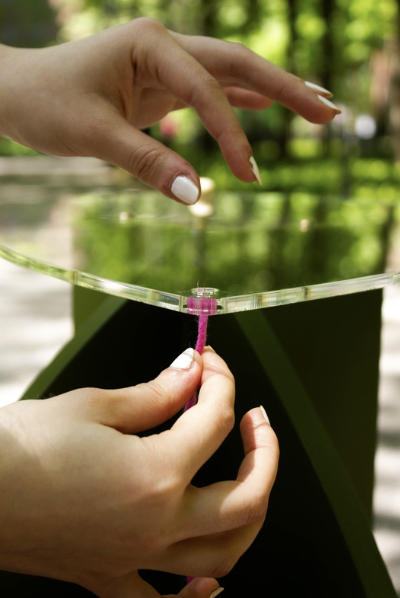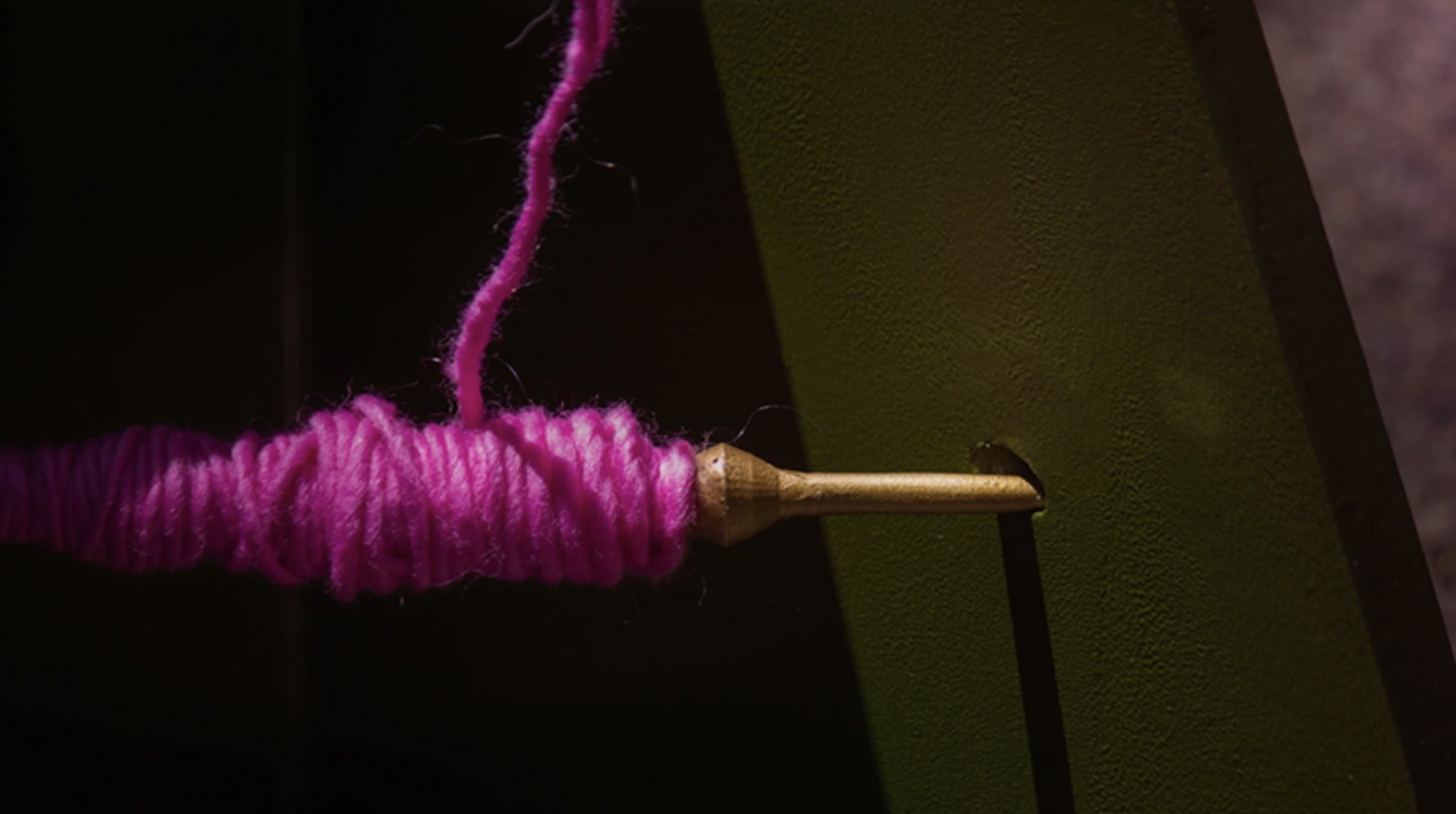
In a world that often moves too fast, Unwind invites slowness. It is a therapeutic side table designed to support individuals living with anxiety, offering a moment of pause through the gentle, repetitive rituals of knitting and spooling. Rooted in the healing power of tactile engagement, Unwind is not just a piece of furniture; it is a daily practice in grounding, breath, and presence.
This project began with a question: How can design support our mental health, specifically anxiety? Through in-depth research, I explored the science behind anxiety and discovered that knitting, a simple, rhythmic action, engages the parasympathetic nervous system, helping lower heart rate and reduce cortisol levels. Knitting also mimics bilateral stimulation, a core component of EMDR therapy, which aids in emotional regulation and cognitive processing.
To better understand how anxiety manifests physically and emotionally, I conducted interviews with individuals who experience anxiety, as well as therapists and knitters. A recurring theme emerged—the need for a sense of agency, control, and rhythm. Many participants shared how grounding it felt to use their hands to focus on something tangible, repetitive, and slow. I also joined a local knitting group, observing firsthand how yarn was often placed haphazardly in laps or on the floor—causing frustrating interruptions that broke the flow of knitting. For those living with anxiety, even these small disruptions can compound discomfort. This insight became a turning point in the project: Unwind needed to offer not just support, but uninterrupted ease.
The design process was rooted in iteration and intentionality. I began by exploring the mechanics of spooling, creating prototypes from cardboard and moving on to more advanced dispensing mechanisms. I studied the movement of yarn, the tension of winding, and the body language of knitters. I found inspiration in the elegant crossing of knitting needles, a motion that symbolizes the bilateral movement central to the design’s concept. Each form I developed reflected these principles—iterating from cold, industrial-feeling forms to more rounded, soft, and approachable silhouettes.
In the final design, each element of the table contributes to a sensory and emotional experience. The base includes a brass spool that smoothly rotates, allowing users to wind yarn effortlessly before threading it up through a central hole in the tabletop. Subtle bumps on each end of the spool intuitively guide the user to the correct starting point. The table legs are designed for flat-pack assembly, reinforcing a sense of personal control and making the object accessible. The tabletop, shaped like a teardrop, is made of glass to highlight the calming movement of the spool below while also offering a sense of lightness and openness.
Color and material were deeply considered. The olive green base evokes grounding, stability, and connection to nature. Brass was chosen for the spool not only for its weight and durability but also for its warm tone, bringing a touch of elegance and tactility to the experience. These choices work in harmony to create a product that is both functional and emotionally resonant.
Unwind is a quiet solution to a loud problem. It does not shout or command attention—it soothes. It offers the user a tool to return to themselves, to find calm through rhythm, and to ease anxiety through a design that is both beautiful and intentional. Whether used for 20 minutes of knitting or simply as a contemplative object in the home, Unwind is a thread to hold—a moment of stillness made tangible.








